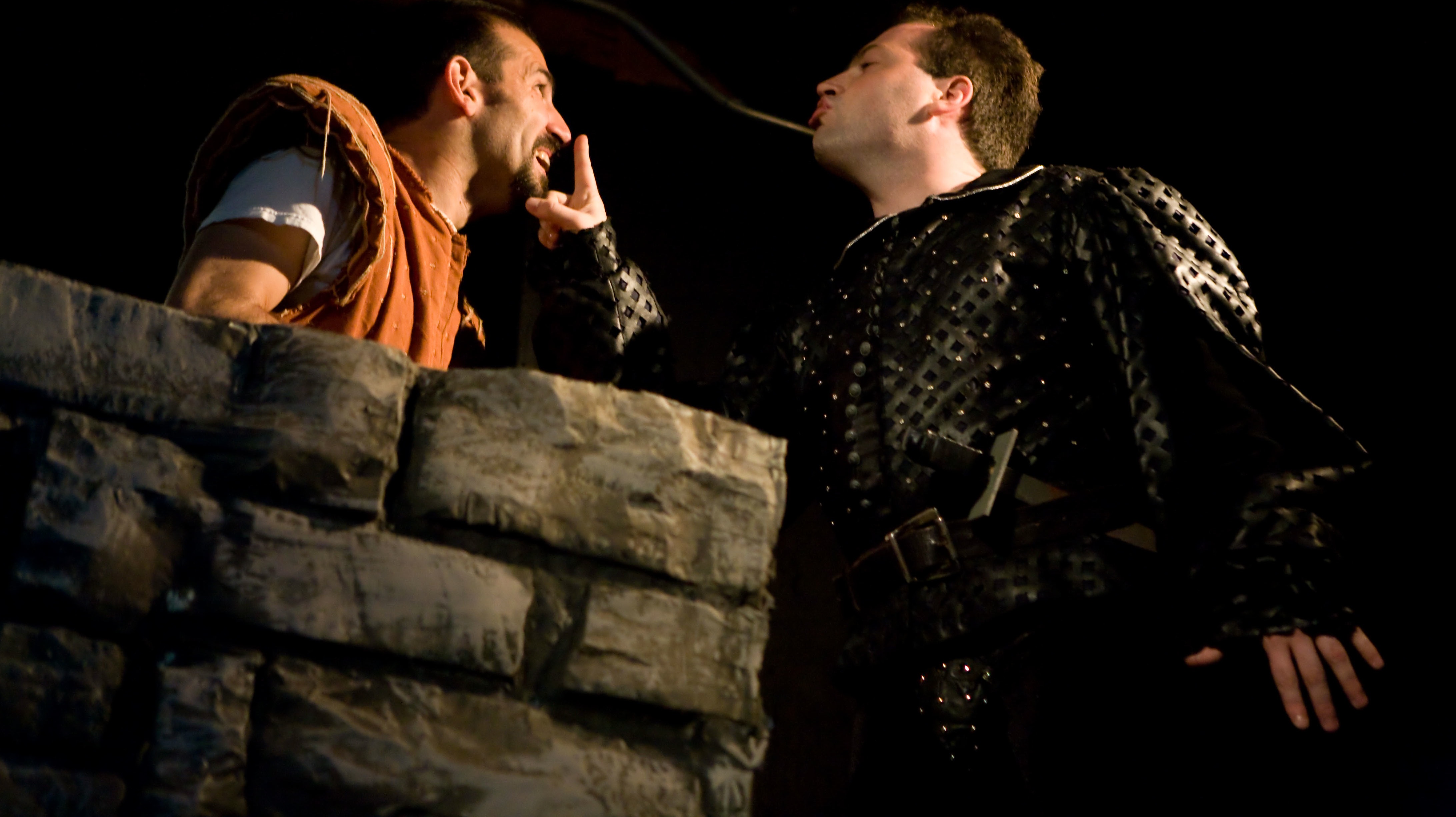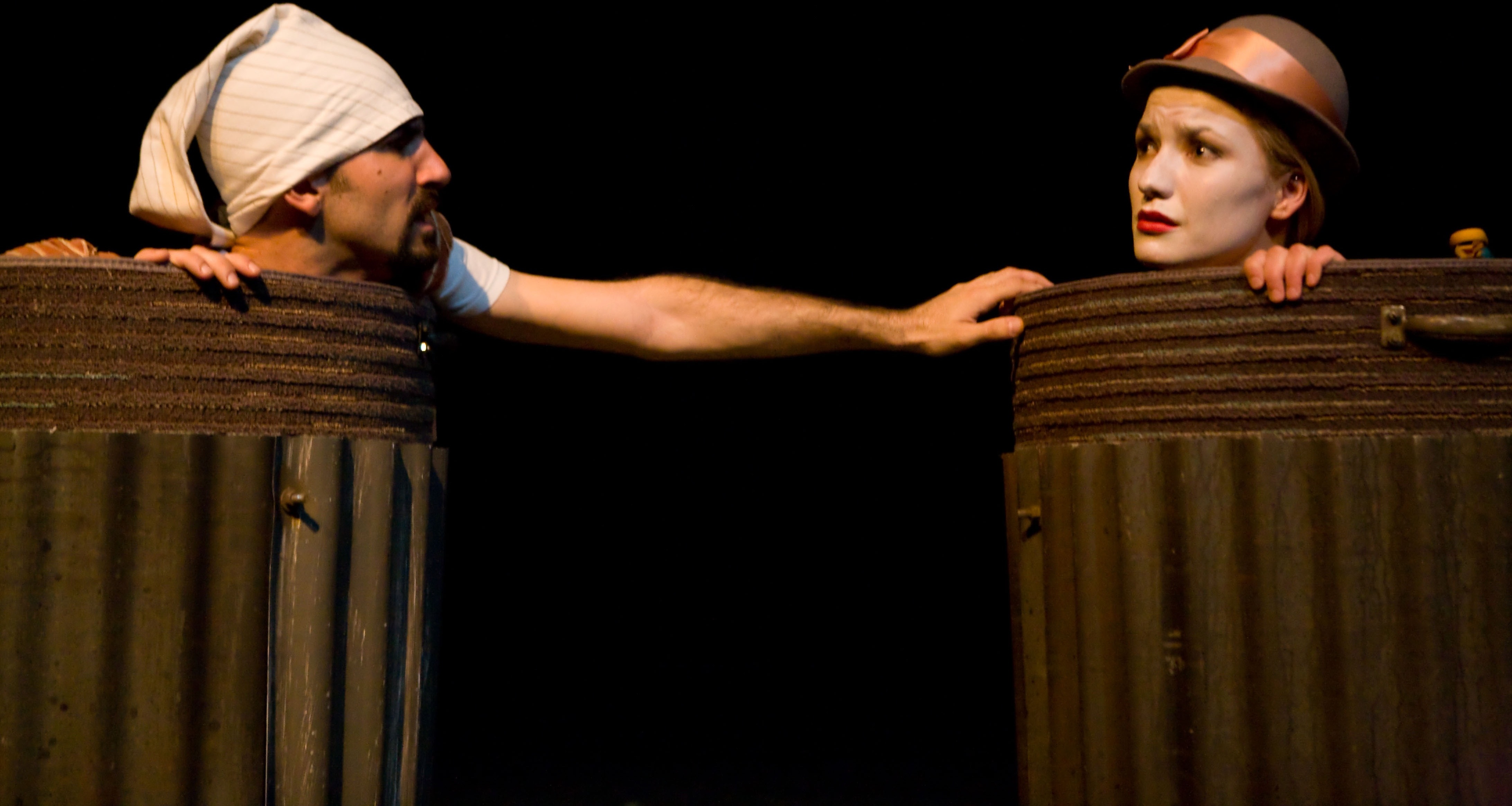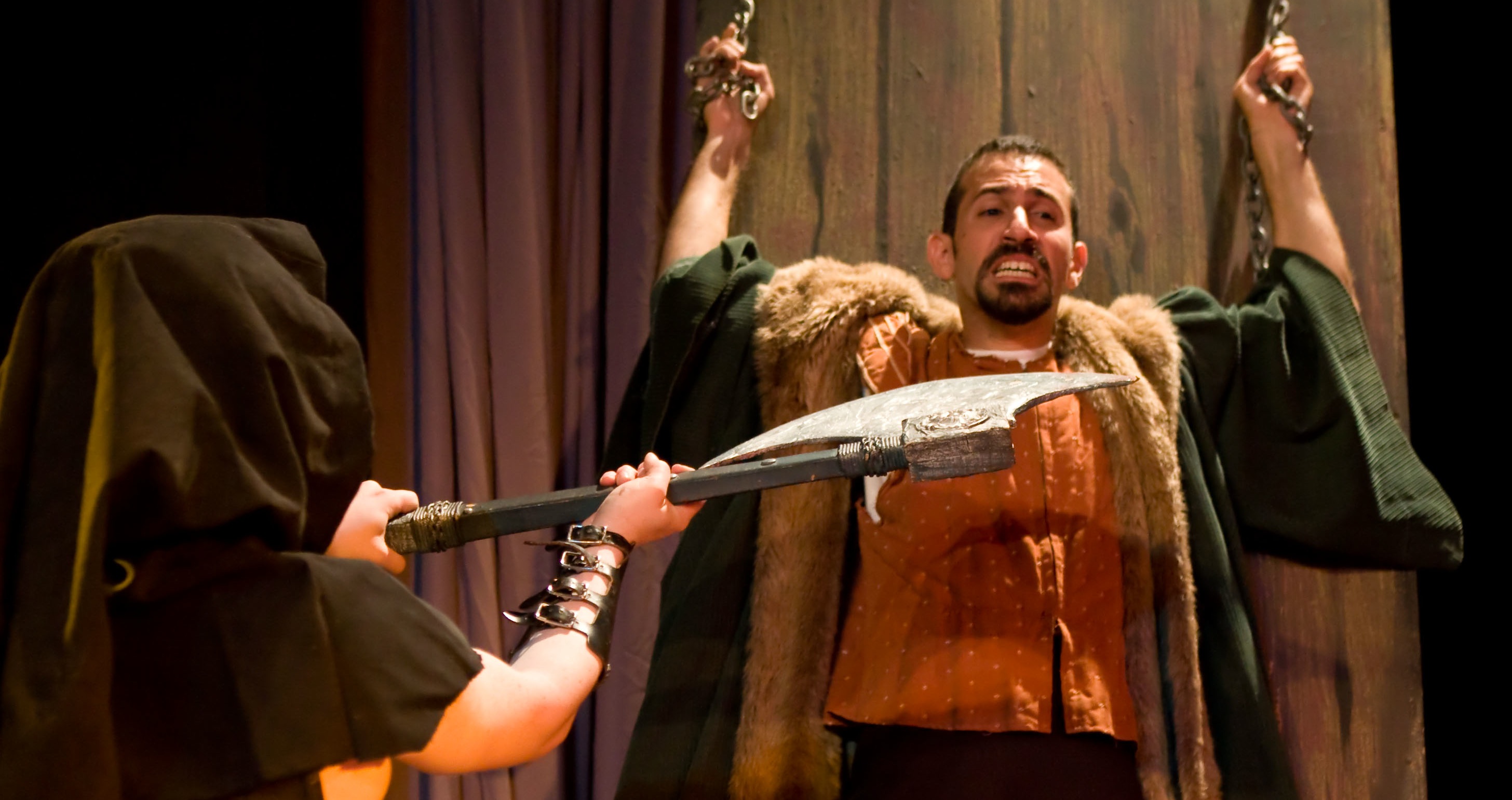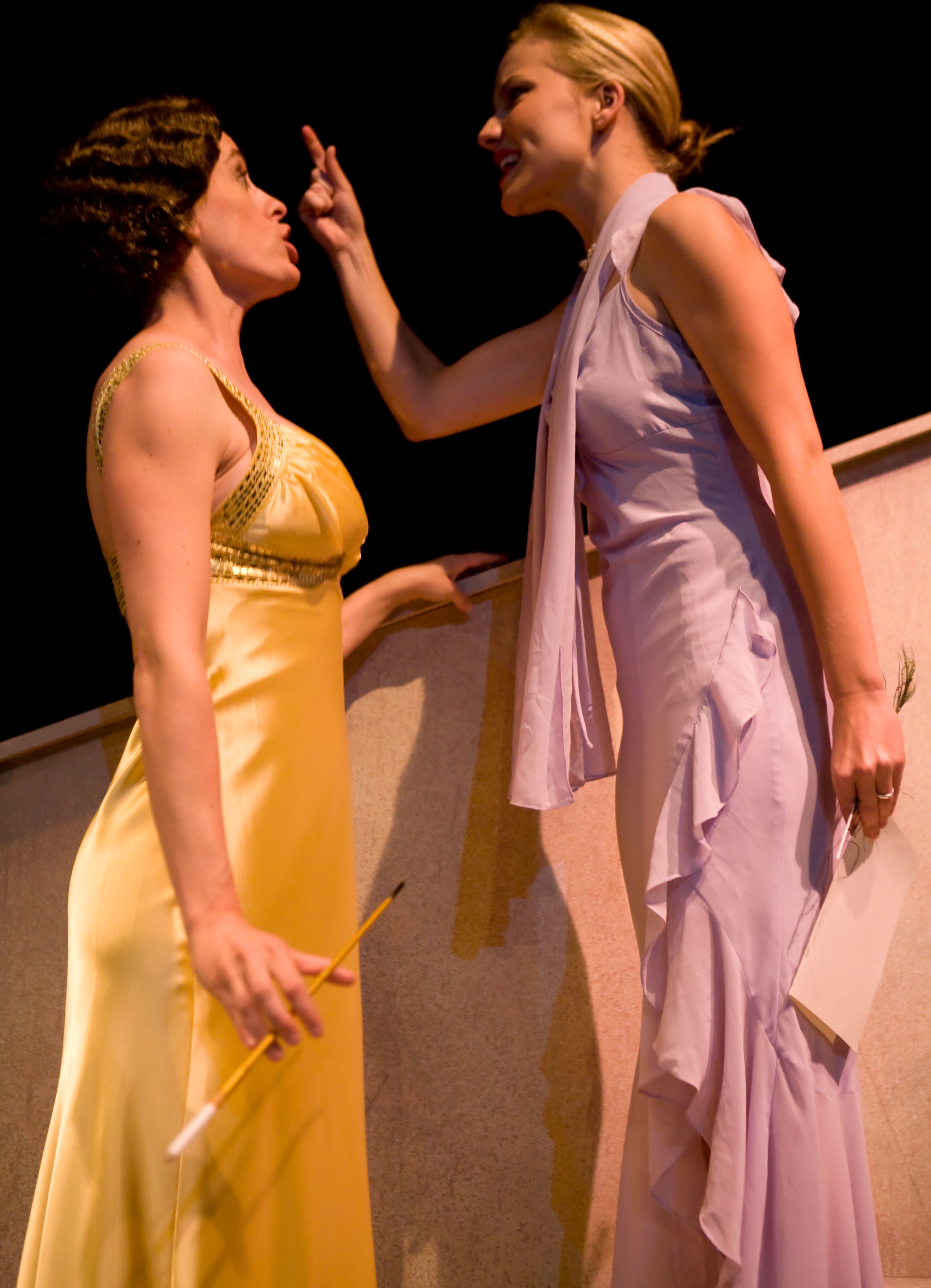


performances from all of his actors." - Palisadian Post

good for many laughs”
- Santa Monica Mirror

illuminating” - Random Lengths





Morgan-Wixson Theatre presents
The Actor’s Nightmare
by Christopher Durang
directed by Jeremy Aluma
May 2010
at Morgan-Wixson Theatre (Santa Monica, CA)
“good for many laughs” – Santa Monica Mirror
“soars to its absurd but very funny climax” – Random Lengths
“ensemble efforts excel … miraculously in synch” – Huffington Post
“Director Jeremy Aluma is to be praised for eliciting strong performances from all of his actors.” – Palisadian Post
starring…
Johnny Arena as GEORGE SPELVIN
Julie Civiello as MEG
Amir Levi as HENRY IRVING & EXECUTIONER
Angie Light as SARAH SIDDONS
Kat Primeau as DAME ELLEN TERRY
Produced by Morgan-Wixson Theatre and Larry Gesling
Diane Christensen: Stage Manager
Heather Marie Bassett: Costume Designer
Zachary Lovitch: Sound Designer
William Willday: Light Designer
John Merritt: Set Designer
Natalie Rich: Set Assistant & Props Master
Jazmine Green: Yoga Instructor
Thomas Brown: Tech Director
Having casually wandered onstage, George is informed that one of the actors, Eddie, has been in an auto accident and he must replace him immediately. Apparently no one is sure of what play is being performed but George (costumed as Hamlet) seems to find himself in the middle of a scene from Private Lives, surrounded by such luminaries as Sarah Siddons, Dame Ellen Terry and Henry Irving. As he fumbles through one missed cue after another the other actors shift to Hamlet, then a play by Samuel Beckett, and then a climactic scene from what might well be A Man for All Seasons—by which time the disconcerted George has lost all sense of contact with his fellow performers. Yet, in the closing moments of the play, he rises to the occasion and finally says the right lines, whereupon make-believe suddenly gives way to reality as the executioner’s axe (meant for Sir Thomas Moore) instead sends poor George to oblivion—denying him a well-earned curtain call.
What’s the surprising thing about Christopher Durang’s two one-act plays that Jeremy Aluma directed for the Morgan-Wixson Theatre is not their nihilistic plot twists. No, it’s that the satire doesn’t feel like satire, it feels like documentary. Both productions share a common premise: we receive scripts at birth and life then is a matter of how you play the role. You can either follow a particular script (the Catholic dogma of Sister Mary Ignatius Explains It All For You) or else sample various ones (snippets of text from classical and modern drama of The Actor’s Nightmare).
Both ensemble efforts excel. The pedantic and draconian hellfire of Sister Mary Ignatius (Joanna Churgin) ensures that we her audience will not only listen to what she says (The Word is the word), but we will believe it as well. With dictatorial charisma and a Wicked Witch of the West righteous voice, she will broach no insubordination, a fact made hilariously apparent in the character of Thomas (who’s actually a young girl, the angelically precocious Brighid Fleming), who follows each command with the dewy brainwashed grin of an embryonic Scientologist. Four alum, on hand to stage a nativity pageant, carp on how mealy-mouthed Mary’s ham-fisted direction of the Catholic script led to their collective woe. As a winsomely feral woman who’s had two abortions (one after a rape), Sam Bianchini’s Diane Symonds nails the resigned whatever of a woman that a benevolent-or-not God forsook. Genevieve La Court’s Philomena Rostrovich goes for a more catatonic tone as a preggers-though-unmarried wallflower. Hunter Davis’s Gary Sullavan is a hoot (a distraught hoot but a hoot nonetheless) as – gasp! – a gay man whose partner – double gasp! – is also one of Sister Mary’s graceless spawn. And Justin Sanders aces the role of Aloysius Benheim, whose sin of alcoholism ranks relatively low on the Scale of Sin but which nonetheless earns him the Sister’s eternal scorn.
The second production describes, with chilling relevance (this could be us!) how scriptless, directorless George Spelvin (Johnny Arena), a non-actor, gets thrown on stage with no knowledge of what play he’s in. In an aside to the audience, he tells us that as an adult he lost his faith (i.e., lost his lines) and so, spiritually, existentially, he has to wing it. In a situation eerily similar to that of Gregor Samsa in Kafka’s “Metamorphosis,” George woke up one day, thought he was accountant and now, for no apparent reason, got mistaken as an understudy for Edwin Booth (brother of Lincoln’s assassin). George must muddle through fragments of Private Lives, a Beckettesque collage, Hamlet, and A Man For All Seasons. Though lost at first, he proves to be a quick learner, except he then gets jerked en media res into another story, a situation which, when you think about it, suggests an apt metaphor for a secular life. While Arena’s George provided a Felix Unger-esque dweeb with whom we could identify, Julie Civiello, Kat Primeau, Amir Levi and Angie Light were engagingly oblique, sweetly nonchalant, and miraculously in synch in this outrageous, off-beat production.
– James Scarborough
Sister Mary Ignatius Explains It All for You and The Actor’s Nightmare are two very different one-act plays by Christopher Durang, both at the Morgan-Wixon Theatre in Santa Monica. The first is at heart a biting satire on the inadequacies of the Catholic Church, the other an absurd but almost affectionate look at the theater from an insider’s view. Directed by Jeremy Aluma, the two make for an amusing, illuminating and perhaps even startling pairing. You may not like Sister Mary Ignatius, and then again you may not like Sister Mary Ignatius. But you’ll laugh a lot and think a lot after she’s finished. It probably helps if you survived even a little of Catholic school. For The Actor’s Nightmare the better versed you are in contemporary theater the more you’ll laugh as it soars to its absurd but very funny climax. These plays are not for everyone, but if you want your comedy mixed with bitters, they are perfect for you.
– John Farrell
The two one-act plays, usually produced in tandem, Sister Mary Ignatius Explains It All for You and The Actor’s Nightmare are both quite different from each other but both share being absurd black comedies, being nightmares in one way or another and approaching life from the perspective of a wounded, recovering Catholic. And I am probably not the first reviewer, nor will I be the last, to say that playwright Christopher Durang is probably going to hell.
Sister Mary Ignatius Explains It All for You is the supposed lecture on Catholic dogma given in 1980 by a nun who teaches at a Catholic school. She has definite ideas about morality and sin, which she is not shy about sharing. And she is sure, beyond doubt, that her ideas are correct. She is sure she knows who is going to hell, who to purgatory and who (very few) to heaven. She explains the changes to Catholic dogma during the fifties and sixties, but does it with barely hidden scorn. At one point she even says, “God knows best. Presumably.”
When she is interrupted in the lecture by several of her former students who want to stage a pageant for her, things get very dark and unwieldy. The pageant they perform was written by Sister’s “best” student sometime during the fifties, but seems quite odd performed by adults. It seems these adults were all warped, to some degree or other, by Sister Mary Ignatius’ teaching.
(Editor’s Note: The plays are now in production at the Morgan-Wixson Theatre in Santa Monica. When I got into the Morgan-Wixson auditorium I discovered that it is not a small theatre. There are at least three hundred seats. It is not, however, an Equity house, so it lives in that grey area of LA Community Theatre, and as such, I decided it wouldn’t be too much of a stretch to cover it for LATR.)
In the Morgan-Wixson Theatre’s production, Sister Mary Ignatius was very enjoyable. There were some odd directorial choices, for instance a wall that inexplicably and clumsily closes in on the students. Also, when the students show up, Sister Mary screams because she thinks she’s seen Mother Mary, but is placed on the stage in such a way that she couldn’t possibly have seen the student she thinks is the Virgin.
Joanna Churgin as Sister Mary is marvelous. Her posture is severe, her demeanor is utterly believable and her comic timing and delivery are subtle and impeccable. You feel, just like Mr. Durang for writing the play, that you are going to hell for laughing, but you can’t help yourself because she is so damned funny.
Brighid Fleming plays Thomas, her young disciple, with charmingly blithe but earnest repetition of the catechism. It was halfway through the play that I realized the pious young boy might possibly be being played by a girl, but wasn’t sure until the curtain call, where her hair was down and she had donned her dress, that I was certain. The four former students were all good. Justin Sanders was very funny as Aloysius, the one who used to wet his pants in class as a boy. Hunter Davis was also good as Gary, the gay one. (“You do that thing that makes Jesus puke, don’t you?” Sister Mary asks him.) Genevieve La Court was charming as Philomena, who had a child out of wedlock.
Sam Bianchini, who plays Diane Symonds, the ring-leader and most troubled of the former students, is a good actress. She makes a common mistake, however, one that director Jeremy Aluma either pointed her toward or let her get away with. During her long, dark monologue about her tragic life after school and her loss of faith, Ms. Bianchini wrings the last bit of rage and grief out of the words, but completely forgets that the play is a comedy. Granted, it is a dark and absurd one, but the extreme tragedy at the core of the character is the exact crux of Durang’s comedy and her delivery seems more about her ability as an actress than it does about serving the story. Whereas the reality of Ms. Churgin’s performance, grounded in human truth, is bitingly funny, Ms. Bianchini’s performance pulls the audience out of the play. It is to Ms. Churgin’s extreme credit that she is able to bring the humor back at the end.
In The Actor’s Nightmare, George Spelvin (if that’s his real name), an accountant (if that’s his real occupation), finds himself, inexplicably, on stage performing either Noel Coward’s Private Livesor, perhaps, Shakespeare’sHamlet or Bolt’s A Man for All Seasons. Or is it Beckett’s Waiting for Godot? Odets’ Waiting for Lefty? Someone is waiting for something, and Mr. Spelvin is thrown between the plays and in (and out of) costumes until he is quite torn down.
Almost everyone who has ever performed live knows where Mr. Durang got his inspiration to write this play, that recurring dream where we are thrust on a stage in the wrong outfit or the wrong script or the wrong cast or unrehearsed or simply naked. These dreams are always too real and the fact that they are shared by so many is small comfort. In the play, Mr. Durang adds to that nightmare Catholic guilt and brings the dream to an ultimate conclusion that is both shocking and funny.
I fear most of the play’s humor was lost on most of the audience at the Morgan-Wixson, who had probably never heard of, much less seen, a play by Beckett or Odets. The production is good, funny, but there is something missing. The actors who guide George through the play that he doesn’t remember ever having rehearsed for are Grande Dame Sarah Siddons (played with grand Grande Dame-ness by Angie Light), Henry Irving, the gay ham who is the blustery Horatio (well played by Amir Levi) and Dame Ellen Terry, the perky, garbage-can dwelling personification of absurd experimental theatre (played with delightful deadpan sincerity by Kat Primeau.)
Julie Civiello plays Meg, the stage manger, who comes on in the nightmare play in various thrown-on costumes to give Mr. Spelvin what prompting she can in order to guide him through his performance. Ms. Civiello has a very good stage presence, but infuses the role with a bit to much schtick for my taste.
Johnny Arena’s performance of George Spelvin may be why the production doesn’t quite gel. He plays it with a wink and a nod to the audience as if he shares a secret joke with them instead of the abject dread and terror of them that is the basis for and thrust of the play.
The sets for both plays, by John Merritt, are very grand and very good, despite the clumsy moving wall in Sister Mary Ignatius mentioned above. The lights were by William Wilday. They were especially good in Nightmare, becoming almost another character pulling the confused Mr. Spelvin around the stage as if by the nose.
The sound, by Zachary Lovitch was good, although the pre-show music and intermission sound were odd choices. Pre-show music was a disconcerting combination of pop songs with the words “dream” or “sleep” in them with jarring segues of church organ music between them. The intermission background sound was recordings of dialogue from old British movies that was very distracting. It was difficult to understand exactly what was being said in them, but difficult to ignore them, either. The costumes by Heather Marie Bassett were quite good.
– Geoff Hoff